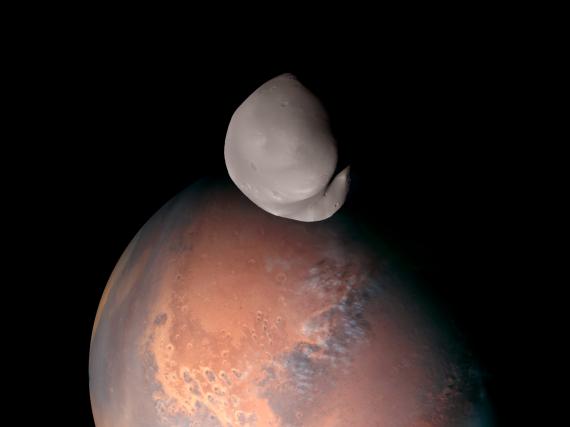
1 minute read
Emirates’ Mars Mission Unveils New Deimos Observations
The Emirates Mars Mission (EMM), the first interplanetary exploration undertaken by an Arab nation, has unveiled unique and ground-breaking observations of Mars’ smaller moon, Deimos. The observations challenge the longstanding theory that Mars’ moons are captured asteroids and instead point to a planetary origin. The observations provide new insight into Deimos’ makeup and structure. These include high resolution images taken during the closest repeated flybys of the moon, as well as the first ever observations made in the extreme and far ultraviolet and the first well-resolved hyperspectral data of Deimos in the thermal infrared. The observations reveal, for the first time, regions on the far-side of Deimos which have never been compositionally investigated. The closest flybys saw the probe, known as Hope, pass approximately 100km from the moon. It is reported that, much like data acquired of Phobos indicate its composition is not consistent with a captured D-type asteroid, early results from spectral observations of Deimos tell a similar story. Both of these bodies have infrared properties more akin to a basaltic Mars than a D-type asteroid such as the Taggish Lake meteorite that is often used as an analogue for the spectral properties of Phobos and Deimos. Hope’s first fly-bys of Deimos commenced in late January and early February 2023, with instrument calibration passes and close fly-bys taking place from March onwards supporting high resolution images and observations by the instruments aboard.







